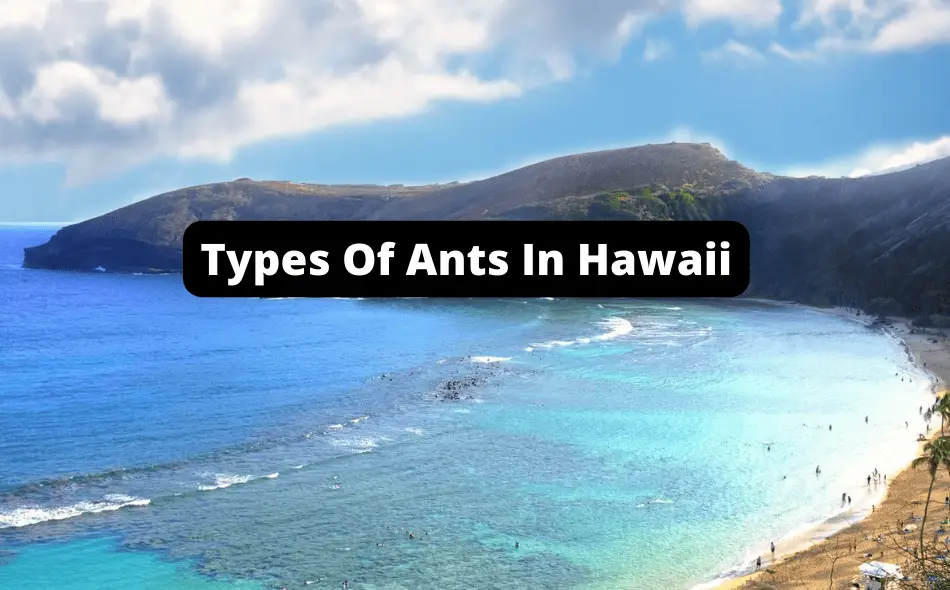Hawaii is a unique and beautiful state located in the middle of the Pacific Ocean.
Known for its stunning beaches, lush tropical forests, and active volcanoes, Hawaii is a true paradise for nature lovers. The state is made up of eight main islands, each with its own distinct culture and landscape.
Visitors to Hawaii can enjoy a range of activities, from surfing and snorkeling to hiking and exploring historic sites. One of the most popular attractions in Hawaii is the Hawaii Volcanoes National Park, where visitors can witness the raw power of nature as molten lava flows from the Kilauea volcano.
With its warm climate, rich cultural heritage, and breathtaking natural beauty, Hawaii is a must-see destination for anyone looking for a truly unforgettable vacation.
While all of this is nice, we can’t forget the cool ants that are in Hawaii. These ants listed below would be perfect to start your ant-keeping journey, as they’re well-adjusted to Hawaii’s humidity, water, and temperature!
Types Of Ants In Hawaii
Hawaii, being a tropical island, is loaded with many cool ants. These include African Big-headed Ants, Arboreal Sneaking Ants, Argentine Ants, Bare Mustache Ants, Bicolored Pennant Ants, Common Crypt Ants, Carpenter Ants, Copper-bellied Ants, Downy Pennant Ants, Emery’s Sneaking Ants, ‘Emma’s Pygmy Snapping Ants, Ghost Ants, Graceful Twig Ants, Granulate Crypt Ants, Greenhouse Fierce Ants, Groove-headed Fierce Ants, Larger Black Sneaking Ants, Lesser Sneaking Ants, Lewis’ Pygmy Snapping Ants, Liliuokalani’s Trailing Ants, Little Fire Ants, Little Yellow Ants, Longhorn Crazy Ants, Obscure Rover Ants, Odorous House Ants, Pallid-footed Ants, Pharaoh Ants, Red Imported Fire Ants, Robust Crazy Ants, Roger’s Crypt Ants, Roger’s Snapjaw Ants, Singapore Ants, Thief Ants, Native Fire Ants, White-Footed Ants, Yellow Crazy Ants, and Yellow Sneaking Ants.
Argentine Ant
An ant that is dominant in northern Argentina, Bolivia, Uruguay, Paraguay, and southern Brazil is called the Argentine ant, known initially as Iridomyrmex humilis.
They have spread to many different regions that have a subtropical climate. The ants can fit through fractures and openings as tiny as 1 millimeter in diameter.
These ants range in length from 1.6 to 2.8 millimeters. The Queens are taller and longer than the worker ants, measuring about 4.2–6.4 millimeters in length.

These ants will establish colonies under the dirt, in crevices in concrete pillars, within boards or timbers, or even amongst the walls in human homes.
Due to their limited capacity to construct deeper homes, they typically build shallow nesting sites in natural settings, usually behind tiny stones or scattered fallen leaves.
Nevertheless, Argentine ants will quickly take up any area, eating and invading all the different types of insects within the same ecosystem.
Bare Mustache Ant
This particular genus is a tropical and subtropical region ant that humans have no trouble introducing to new places.
It has an astonishingly broad range, appearing in continental and island areas across the tropical and subtropical regions and northern parts.
These ants consume a variety of tiny, soft-bodied invertebrates, with around 250 individuals developing moderately-sized nests.
Colonies generally grow under garbage or woody plants on the surface in heavily disturbed or farmed environments.
The bare mustache ants are the most energetic of the investigated dacetines and occasionally exhibit unexpected brutishness.
For example, in manufactured nests, japyx or termites are regularly killed by aggressive, bigger myrmicine.
The tiny dacetines raced for these insects as soon as they came into vision with them, grabbing hairs or antennae and tripling up to blister them.
Bicolored Pennant Ant
Monomorium floricola is the bicolored pennant ants scientific name.
Although additional names include the flower and flowery ant, the length of the bio-colored pennant ant ranges from 1.5 to 2 mm.
Its thorax is typically yellow or brown in the middle, with a head and abdomen ranging from dark brown to black.
The bicolored pennant ant is a small, passive ant that moves slowly and is considerably more profound in the center of its thorax, skull, and abdomen – the size of the workers is uniform.
The bicolored pennant ant is a Tropical tree-dwelling insect that builds its nests in tiny crevices beneath tree bark, bare twigs, or dry branches.
Although the bicolored pennant is frequently spotted in cities, it usually makes its nest outside buildings.
The ant prefers disturbed habitats to infiltrate and live in, but it is less likely to do so in a woodland that has yet to be visited.
Carpenter Ant
Carpenter ants got their name because they dig wood to make their nests, creating neat tunnels within the wood.
These ants will only chew and burrow through the wood to build nests; Interestingly, they do not consume wood.
Depending on the species, Carpenter ants’ length ranges from 12 to 25 mm.
Carpenter ants that are black are frequent pests, but these insects can also be all-black, all-red, or all-brown.
When mature, the black western carpenter ants colony has ten to twenty thousand workers.


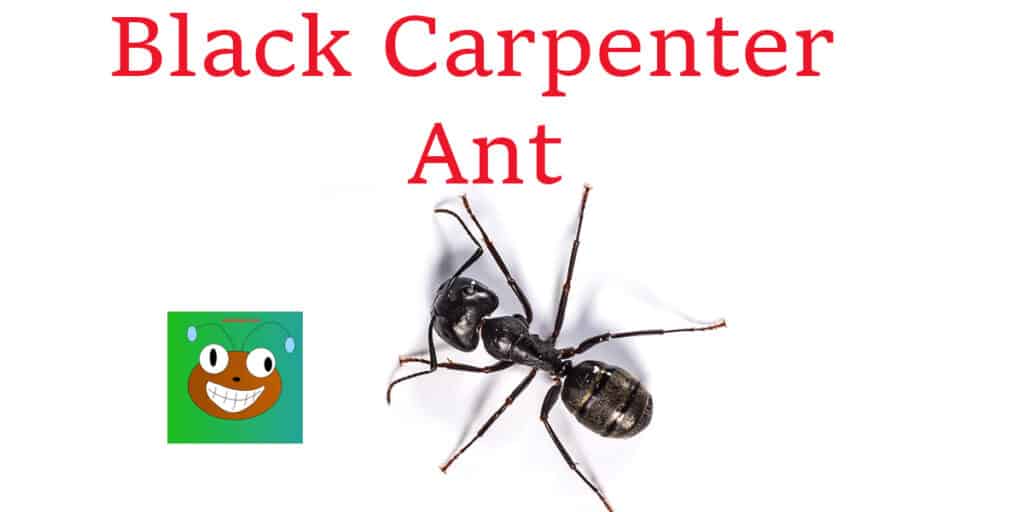
Incredibly, some big colonies have more than fifty thousand ants.
In most territories, there is only one active, wingless Queen. The colony must be older than two years before the production of swarmers takes place (potential new queens).
Instead, swarmers are produced the year before and kept in the nest during winter in preparation for the ensuing years’ dispersal.
In the east of the US, swarmers arrive from May through August, whereas in the west, they appear from February till June.
Common Crypt Ant
The worker’s head of a common crypt ant is both punctate and semi-opaque.
In the lateral aspect, the petiole of the worker’s skull seems comparatively thin, with the front and rear faces descending toward the top.
Interestingly, the workers and queens are incredibly similar; however, the Queen is bigger and more robust.
The wing vein’s stigma has a distinct and well-known ashen brown color. These ants are about 1.6–6 mm long.
The ants are most frequently found in habitats including wet forests, lowland rainforests, leaf litter, or pool bottoms.
They consume insects like springtails that are found in leaf litter.
Additionally, they build their nest under grass sod, rotting stumps in the shade, or under stones.
The mandibles of the sub-species Hypoponera are triangular and have several teeth surrounding their inner borders.
Their petiole stem has unique front, upper, and back aspects.
Each of the rear legs’ tibiae endings has a solitary, sizable spike resembling a comb. These ants have an exciting colony structure.
Inside the colony are three types of females:
- Genuine females (feathered and delicate)
- Ergatoid and worker-like females (ancillary reproductives without wings)
- Regular workers
Ghost Ant
This ant looks like it should star in a Halloween movie.
With a dark shade on its head, pale and translucent legs, and Gaster, this Ant seems like it could be a ghost.
This ant is about 1/16th inch long but sometimes looks even smaller.
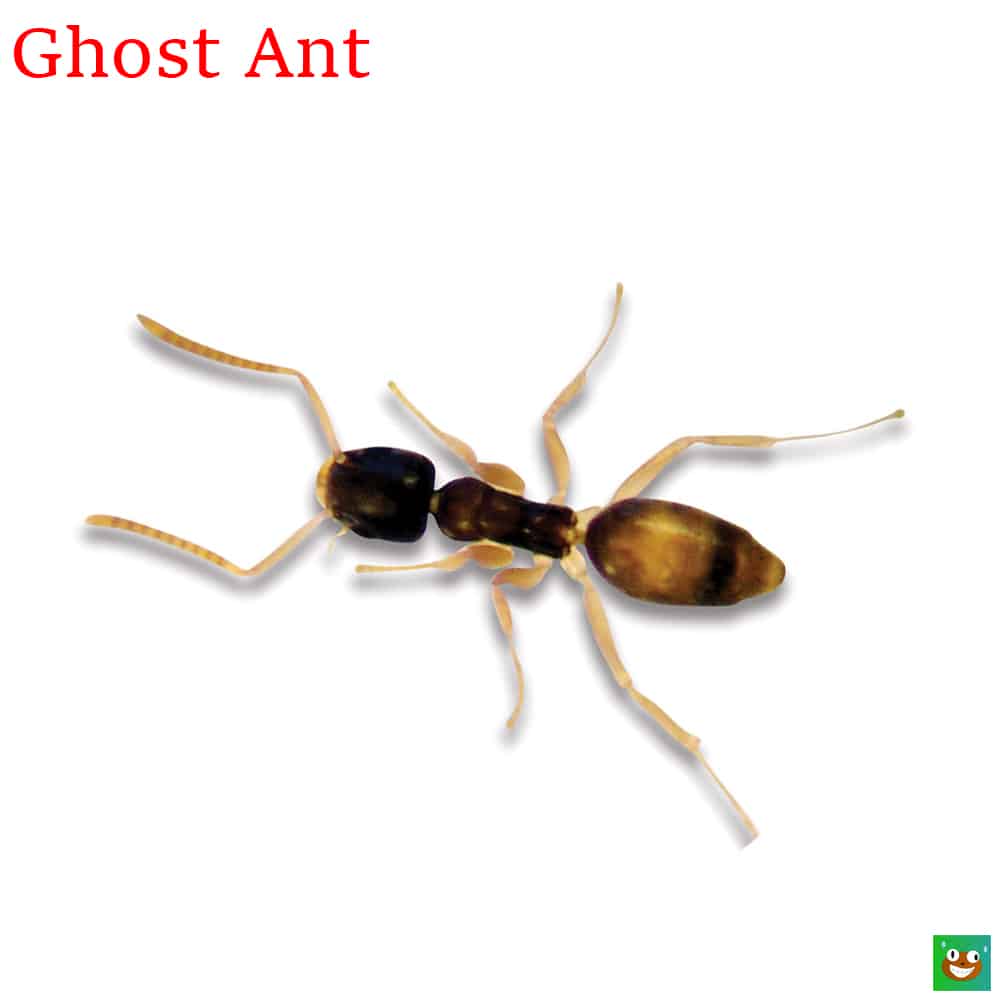
The unique thing about this ant is since its legs are translucent, many people underestimate their size
…or don’t see this ant crawling around at all.
These ants love sweets, so make sure you don’t drop any cookies during your midnight snack run.
An interesting fact about Ghost Ants is that they can actually have multiple Queens in one nest.
This is unique, as most ant species have one Queen Ant.
Groove-Headed Fierce Ant
The genus gets split into multiple species groupings classified by different traits.
Most general workers have antennas of 11 or 12 parts, or 3-segmented spurs on the ends, a textured clypeus, an accessory stinger, a jaw with three or four teeth, and an appendages spear.
Typically, these ants are 1/8 to 1/4 of an inch in length. A species of pavement endemics from Europe was presumably brought to America in the eighteenth century.
Most of these species are in subtropical, tropical, or oriental areas.
In Japan, ten species are currently known. Most species are known to exist and breed in soil, decomposing wood, or fallen leaves.
Some individuals lived in termite colonies or trees. The nests are often erratic, sandy craters with shaky construction.
However, they occasionally build their nests on decaying stumps.
This ant is infamous for its fury – when workers believe they are in trouble, they will ruthlessly attack.
Lesser Sneaking Ant
The lesser sneaking ant is a vagrant species that is widespread by human behavior in many tropical areas.
It is a quiet and neglected ant while having a vast oriented range. According to research, this genus is indigenous to Africa, and it is possible this ant’s dispersal to other regions began many centuries ago.
Its typical size is between 1.5-1.7 mm. These communities produce several hundred males (with wings and without wings).
Ergatoid individuals distinguish themselves from workers by having traits including smaller pupils, more muscular antennal scapes, or lighter skin tones.
There are rare occurrences of two other male types, gynandromorphs and gynandromorphs. Males with wings exhibit no aggressive behavior toward ergatoid individuals.
However, matings occasionally occur in nesting with both types of males involved.
There usually is one ergatoid individual with many winged individuals in nests, which yields a combination of winged and wingless individuals.
Little Yellow Ant
A subspecies of Plagiolepis is the tiny yellow ant or Plagiolepis alluaudi.
It is set apart from most other little yellow kinds of ants and is acknowledged as a common exotic species.
It’s also termed Alluauds little yellow ant in honor of Charles A. Alluaud.
A typical Plagiolepis alluaudi measures 1/16 inches in length, has 11 antennal sections, appears yellow, and has a spherical head.
The oblong-headed P. exigua is also the sole yellow ant within the genus Plagiolepis.
It is currently unknown if Plagiolepis alluaudi bites or stings people. However, this ant species can spread illness and may pose a hazard to commercial crops such as oranges.
Developed colonies are challenging to exterminate.
However, setting out ant baits may eliminate some in an extensive settlement at once.
In addition, these ants have been seen devouring sweet items within human dwellings.
Longhorn Crazy Ant
The reddish-brown skull of a worker longhorn crazy ant measures around 2.3 and 3.0 mm in length. The oval eyes are set back far on the face.
This ant also has large antennae and legs, making it simple to differentiate it from other species of its family.
The opportunistic scavengers known as longhorn crazy ants consume various foods, including living and microscopic bugs, nuts, berries, and nectar.
Since the colder fall or winter has fewer natural foods, hunter-gatherers penetrate homes for food or moisture.
These longhorn crazy ants are not indigenous to America. However, most of the US is home to colonies of this tropical genus.
Infestations can happen inside and outside homes in southern areas with tropical and subtropical temperatures.
Longhorn crazy ants will frequently be seen indoors in northern regions with more moderate climates.
Odorous House Ant
The worker-odorous house ants are around 3mm long and black to dark brown.
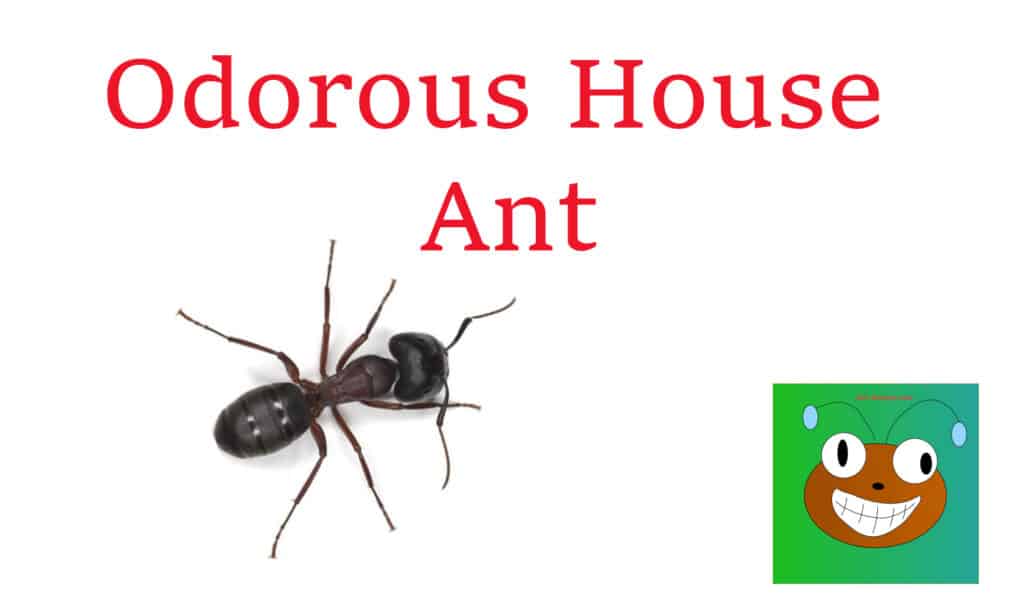
Additionally, they have antennae that resemble a long stick.
Crushed, odorous house ants produce a pungent, rotten coconut-like stench that gives these insects their name.
Odorous house ants build their nests indoors next to moist areas, such as heaters, heater cavities along hot water pipes, under leaking fixtures, and on termite-damaged wood.
Outside, odorous ants are frequently discovered on bare soil or beneath firewood piles. Odorous house ants enjoy eating sweets and particularly enjoy consuming honeydew.
Occasionally, they eat other things, such as pet food or insects. Approximately tri-monthly, they often relocate their nests because of rain.
They create new colonies following mating flights at the end of spring and summer.
Colonies are also split by the budding process, in which a queen leaves her nest with some workers to start a new colony elsewhere.
Pharaoh Ant
Another smaller and at about 2.4 mm (1/16 Inches), and interestingly the males and worker ants are actually the same size (not the Queen).
This ant can quickly become a nightmare if it infests your home, as it can survive even the most advanced household pest control attempts.

These ants will eat everything and are well known for infesting hospitals and other large corporate buildings that offer a cafeteria.
Because these ants don’t need soil or other substrates to create nests, they can infiltrate a building and start building out a home anywhere.
These ants do not care where they put their nest and have been seen nesting in everything from electrical wiring to underground sewage systems.
A unique (and sad) fact about Pharaoh Ants is that they have been caught feeding on the flesh of burn victims and are known for transferring diseases within hospitals.
Red Imported Fire Ant
Some of the approximately 200 distinct insects in the genera are known as “fire ants.”
Due to their red color, they do not belong to the subspecies Solenopsis Richteri.
Many of the names possessed by each species of Solenopsis are commonly used interchangeably when referring to each other, such as the term “red ant.”
The three body parts of adult fire ants are the skull, the thoracic, and the abdomen, along with three sets of limbs and a group of antennas.
Luckily, this is the same as the anatomy of all other adult insects.
The red fire ant has a golden-brown skull with a dark metasoma (abdomen).
The ants vary in length from 2 – 6 mm and are two colored, black and red.
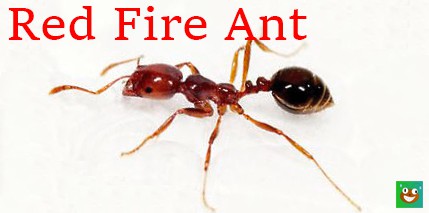
An easy way to identify a fire ant is by its dark abdomen and contrasting red thorax.
These ants are aggressive, eat anything in their path, and breed at an accelerated pace.
Fire ants can become worker ants in just 15 days. These ants are officially a pest in the United States, consuming over 300 million acres.
Roger’s Crypt Ant
These ants range in color from reddish yellow to darker brown. Their mesosoma or gaster is very hairy and coarsely pierced, with their antennae having 12 segments, eventually enlarging to a ball shape. The scapes do not extend over the back of the skull.
There are two different sorts of queens, apterous and winged. Florida was where Hypoponera punctatissima was first discovered before quickly expanding to the rest of the Americas.
These ants are approximately 1/8-inch long.
Foraging larvae, as well as the ant’s colony, are typically elusive and covert.
Additionally, the ants not being active till temps reach 70 degrees adds to their enigmatic character.
Their primary food sources include arthropods and bugs – especially soil insects.
The flight ant species, Hypoponera punctatissima, reproduces by pairing non-winged males with winged females.
Thief Ant
Among the tiniest species of domestic ants is the thief ant. They received their name because they tend to build their nests near or inside those of other ant colonies, which they subsequently raid for food and eggs.
Although they can have numerous queens and thousands of workers, their colonies are typically smaller than other ant species.
While they have different traits, thief ants and pharaoh ants can frequently be mistaken.
Due to their preference for fatty meals and sweet delights, these ants are sometimes called grease ants or sugar ants.
The majority of the Eastern US is home to this species.
The bodies of thief ants range in color from light brown to pale yellow. They are usually 1.5 mm – 2.2 mm in size. Their body is irregularly shaped, with their thorax appearing to lack spines. But their waist comprises two nodes.
